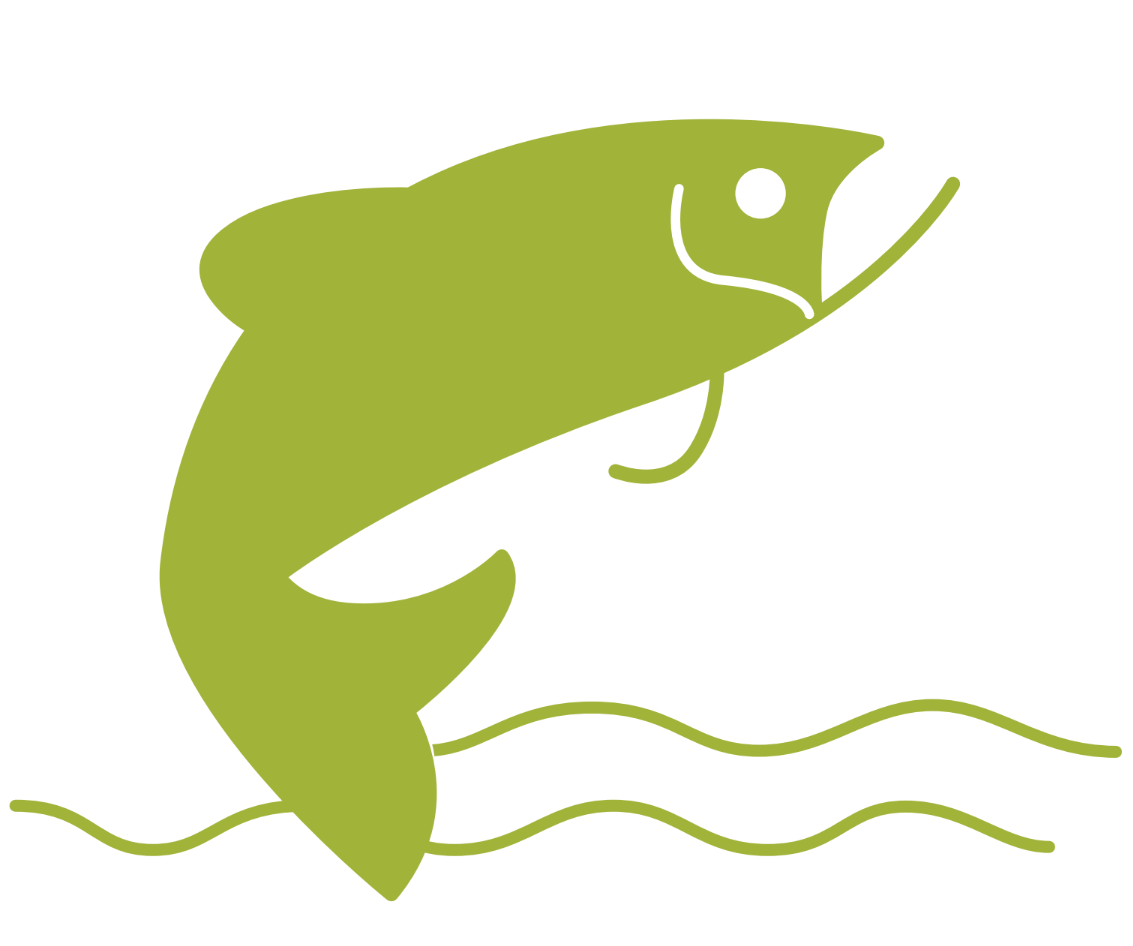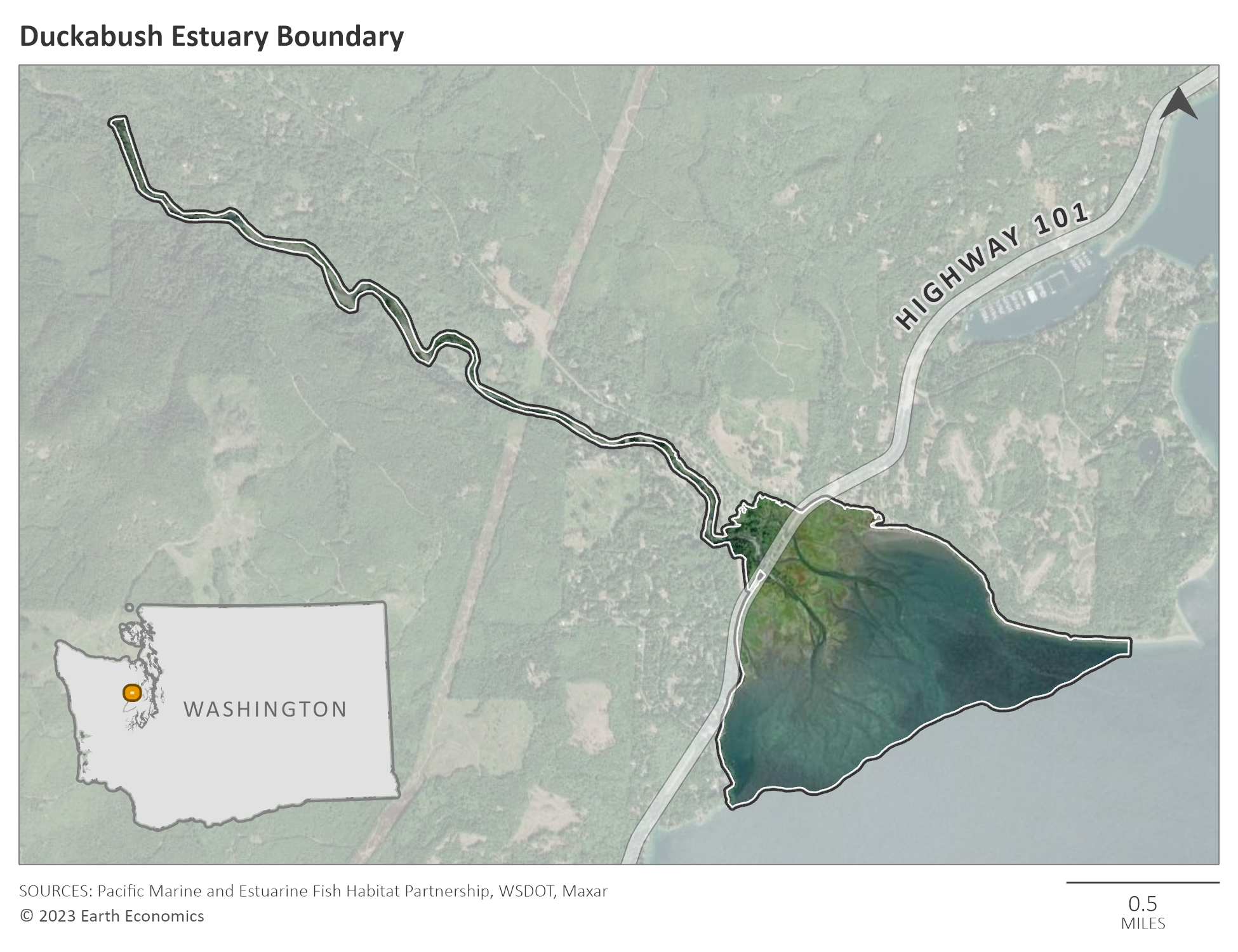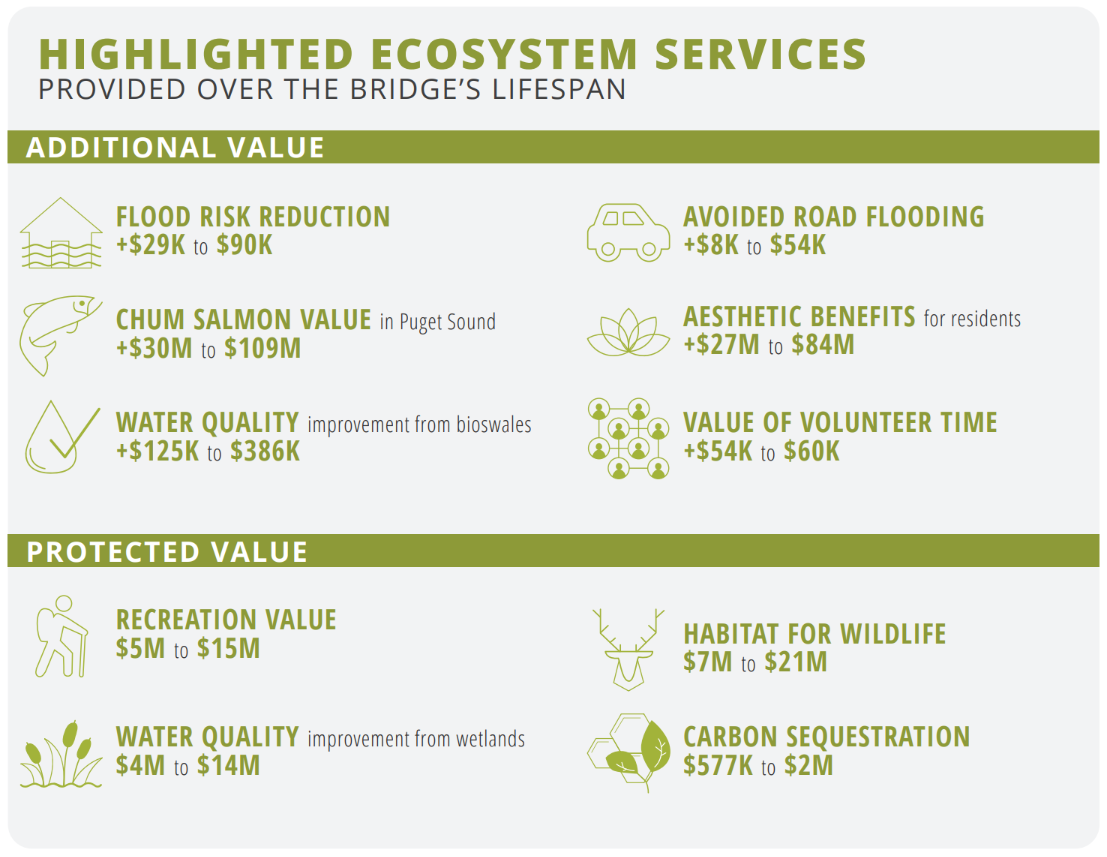IMPACT SUMMARY
$75M - $250M
in ecosystem services benefits over 100 years
449 local jobs
supported per year of the project, 1.54% of the employable population
400,000 Chum salmon
additionally supported by improved nursery habitat
In early 2023, Earth Economics conducted an ecosystem service valuation and jobs analysis of the Duckabush Estuary Restoration Project for the Hood Canal Salmon Enhancement Group, in partnership with the Washington Department of Fish and Wildlife.
The $120 million infrastructure project will raise a section of the US Highway 101 that has bisected the Duckabush estuary for 100 years. The causeway and two bridge sections will be replaced with a 1,600 foot full spanning bridge, reestablishing the estuary’s connection to neighboring floodplains and creating a corridor for marine and terrestrial wildlife.
A traditional benefit-cost analysis (BCA) of the project identified $14.4 million in benefits, largely based on avoided property losses and other damages from flooding. Earth Economics expanded the BCA to include the value of ecosystem services protected by restoring the estuary. Earth Economics calculated the total value of the wetlands at $249.6 million ($75.4 million at a 3 percent discount rate) over the 100-year lifespan of the bridge, recognizing the project’s broader benefits.
The restoration project will provide significant value to residents who will benefit from reduced flood risk, avoided road disruptions, and improved water quality; the project will support 449 jobs in the local economy, 1.54 percent of the employable population.
The project is also important for supporting keystone species. Earth Economics worked with DFW scientists to predict an increase in chum salmon due to the improved nursery function of the estuary, valuing the additional 400,000 salmon from $30 million to $109 million to Puget Sound residents.
The restored estuary will also improve habitat for other fish species and support fish migration into Hood Canal, and improve the resiliency and biodiversity of the broader ecosystem. The study builds on previous work with the Hood Canal Salmon Enhancement Group on the Quilcene river and adds to our understanding of the links between restoration efforts, salmon population, and the benefits to residents along Hood Canal.






